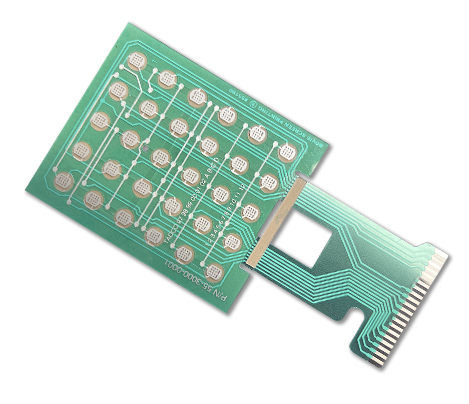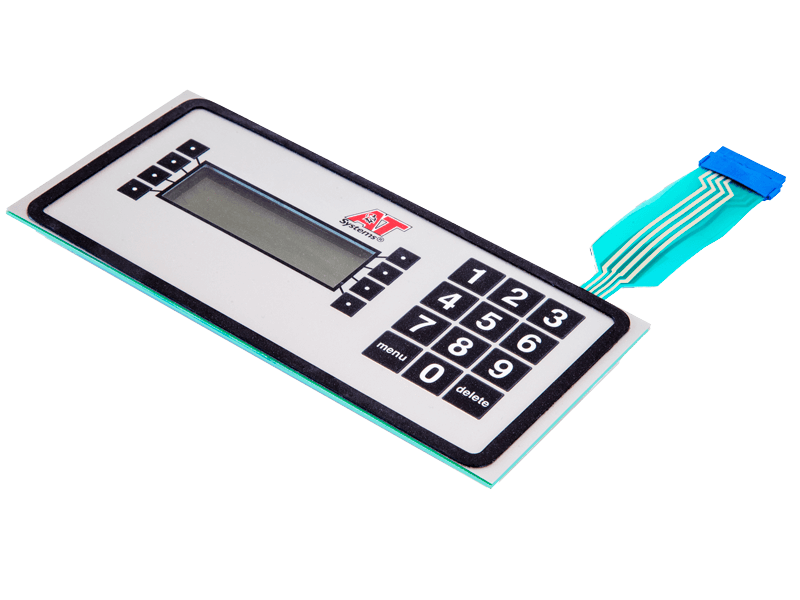Discover the Future of Control Interfaces: Why Membrane Switches Over Are Gaining Appeal
As markets progressively focus on effective and easy to use control user interfaces, membrane layer buttons are arising as an engaging remedy that incorporates capability with layout flexibility. With the rise of smart modern technology and sustainability concerns, the advancements and capacities surrounding membrane layer switches over warrant more detailed exam.
Understanding Membrane Switches
Membrane buttons are indispensable elements in modern digital tools, functioning as interfaces in between individuals and devices. These buttons are composed of multiple layers, generally consisting of a visuals overlay, a spacer layer, and a circuit layer. When a user presses a switch on the overlay, the top layer reaches the circuit layer, finishing a circuit and sending a signal to the device. This simple yet efficient mechanism permits seamless communication with innovation.

Durability is an additional crucial function, as membrane buttons can be created to withstand environmental variables such as dampness, dust, and chemicals. This resilience makes them excellent for applications in extreme conditions. Overall, recognizing the structure and function of membrane layer switches is critical for valuing their role in the advancement of individual interfaces in today's technology-driven world.
Trick Advantages of Membrane Layer Switches
Supplying a variety of benefits, membrane layer switches have actually become a recommended option in numerous applications (Membrane Switches). One of the primary advantages is their compact layout, enabling suppliers to enhance room in gadgets without endangering performance. Membrane layer switches are light-weight, which is especially beneficial in portable digital tools

Furthermore, these buttons provide exceptional durability. Built from versatile products, they are resistant to dust, wetness, and a selection of ecological factors, making them ideal for harsh conditions. This toughness typically translates right into a much longer lifespan compared to conventional mechanical switches.
Additionally, membrane layer switches over permit seamless integration of icons and graphics, providing visual adaptability and enhancing user experience. Personalization alternatives are considerable, making it possible for brands to create distinct interfaces that line up with their item identification.
Another key advantage is their ease of cleaning and upkeep. The level surface area of membrane layer switches over prevents the build-up of dirt and grime, making them optimal for sanitary settings. Membrane buttons are cost-efficient, as they can be generated in high quantities at reduced expenses, making them available for a wide range of sectors. These elements jointly add to their boosting popularity in contemporary control user interfaces.
Applications Across Industries

A myriad of sectors are significantly adopting membrane layer switches as a result of their convenience and functionality. These control interfaces are particularly widespread in the automotive field, where they are used in control panels and infomercial systems, supplying a user-friendly and smooth user interface. In the medical field, membrane switches help with the operation of diagnostic equipment and client monitoring systems, guaranteeing dependability and simplicity of usage in vital situations.
Additionally, the consumer electronic devices sector advantages from membrane layer switches in gadgets such as microwaves and remotes, enabling for streamlined style and improved sturdiness. Membrane Switches. The aerospace market also uses membrane switches in cockpit controls, where room restrictions demand portable and efficient style options
Furthermore, the commercial field employs membrane switches in machinery control panels, providing strength versus harsh environments and ensuring functional efficiency. Retail settings have embraced membrane switches in point-of-sale systems, improving individual communication while maintaining visual allure.
Layout Trends in Membrane Switches
Advancing together with technological improvements, design fads in membrane layer switches are progressively concentrated on enhancing user experience and visual appeal. Modern membrane layer switches are being created for simpleness and user-friendly usage, allowing individuals to browse user interfaces effortlessly. This change towards user-centric design stresses tactile responses, making sure that individuals obtain prompt verification of their activities.
In addition, personalized graphics and shades are ending up have a peek here being conventional attributes in membrane switch styles. This flexibility allows manufacturers to create tailored interfaces that align with branding and specific user demands. The unification of backlighting is another famous fad, as it not just enhances exposure in low-light conditions yet also includes a visually striking component to the general design.
Furthermore, the trend in the direction of light-weight and Your Domain Name slim products is acquiring grip, enabling sleeker styles that can perfectly incorporate right into different applications. This shift not just enhances aesthetics however also adds to the general capability and durability of the switches. Last but not least, environmentally friendly products are increasingly being used, reflecting a broader activity in the direction of sustainability in product design. These style trends jointly underscore the growing importance of combining kind and feature in the development of membrane switches, ultimately enriching the individual experience.
Future Expectation for Control Interfaces
The future of control interfaces is poised for considerable transformation as arising technologies remain to improve user communications across various gadgets. The integration of innovative products, such as versatile electronic devices and conductive inks, will certainly enhance the convenience and functionality of membrane layer buttons, making them significantly versatile to a variety of applications. Additionally, the surge of the Net of Points (IoT) will drive demand for even more instinctive, user-friendly user interfaces visit site that can seamlessly integrate with wise gadgets.
As expert system and artificial intelligence evolve, regulate user interfaces will likely include even more personalized functions, enabling individuals to connect with devices in methods that are tailored to their preferences and habits (Membrane Switches). This shift towards user-centric layout will certainly position membrane buttons as a principal out there, particularly in fields like health care, automotive, and consumer electronic devices
Furthermore, the promote sustainability will motivate manufacturers to check out environmentally friendly materials and manufacturing methods, making certain that the future of control interfaces straightens with environmental considerations. Overall, as technology continues to advance, membrane switches will come to be significantly advanced, leading the way for innovative control remedies that improve user experience and functional efficiency across varied sectors.
Final Thought
In verdict, the increasing fostering of membrane switches highlights their relevance in the evolution of control interfaces. As straightforward user interfaces end up being crucial in the context of IoT and AI advancements, membrane switches are placed to play a critical function.
As markets significantly focus on straightforward and efficient control user interfaces, membrane buttons are emerging as an engaging service that incorporates performance with design adaptability.Durability is another essential function, as membrane layer buttons can be developed to stand up to environmental factors such as wetness, dust, and chemicals.Developing together with technical innovations, layout trends in membrane layer switches are progressively focused on enhancing individual experience and aesthetic appeal. Modern membrane layer buttons are being developed for simplicity and instinctive use, allowing individuals to browse interfaces effortlessly. These style fads jointly emphasize the growing importance of combining type and feature in the development of membrane switches, eventually enriching the user experience.